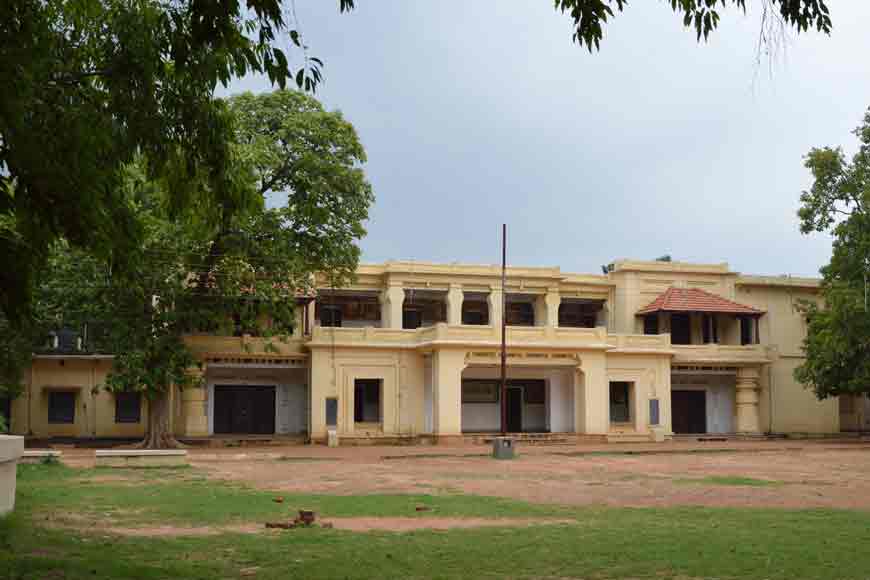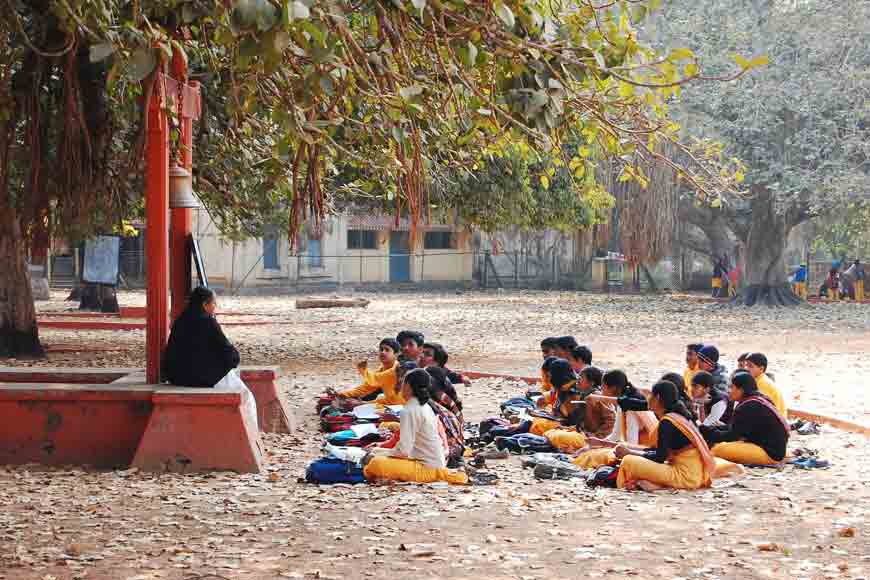Patha Bhavan and My Childhood

PIYALI CHANDA
My early memory of Patha Bhavan dates back to 1956, when I was admitted there as a regular student. What was so special about this place is not easy to define, but it was obviously different. A familiar scene at Santiniketan was this: a group of boys here and a group of girls there --- all walking briskly to the Ashram. They talk merrily amongst themselves and tread over the meadows and the fields gloriously lit by the morning sun. The Vaitalik bell rings and we head for the Gour Prangan, the sprawling courtyard in the heart of the Ashram and fall in long rows. The bell stops and there is a complete hush. As the bell goes again, there rises a chorus of the chanting of the vedic hymn. After this the Vaitalik choir sings. This was our daily inception of Patha Bhavan activities.
Interspersed among clusters of leafy bowers lay the beautiful cottages of the Ashrama. And one should not forget to mention the unique architecture of the brick-built buildings, Singha Sadana, the old library, the Purba Torana and the Paschim Torana, all lend a distinct character to the place. It was like a painter’s delight, an artist’s vision and a poet’s dream transformed into reality. The abode of peace would ring with laughter, talk and music. Rarely did we ever see a clash or conflict among residents here. They were peace loving people but not adverse to wit and humour. Gurudev had a message that was followed. This was a place that was a true home of the eternal child, where the child can tread freely and fearlessly, it is like heaven for him. Where the world falls apart, torn by war and confrontation, the child faces death.

Santiniketan with its bowers and groves has given us this message of true happiness of human life. Once in a lifetime, a human being would feel nothing can give him happiness but the very message of serenity imparted by Nature. So, the serene Ashrama stands out as a haven of peace.
(Taken from A Common Concern: Rediscovering Tagore’s Visva Bharati)










